

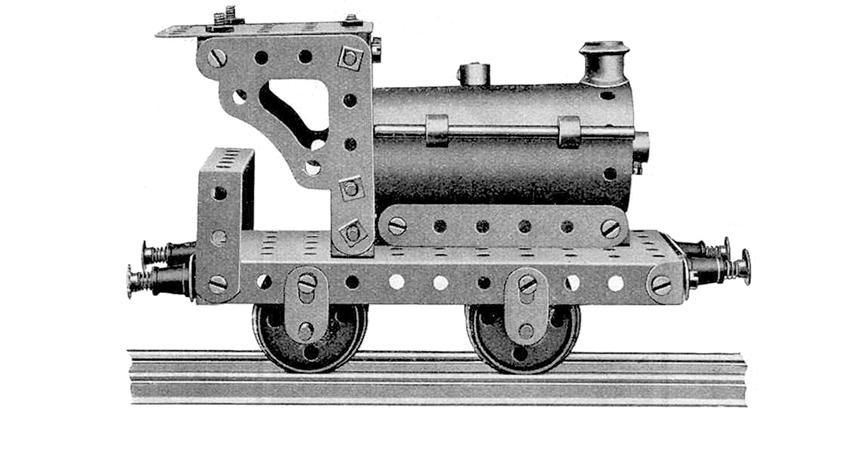
From small acorns…
Good afternoon to you all and welcome to this July edition of Engine Shed.
A slightly different feel to the Engine Shed for this month’s regular edition, as we shift focus from our new tooling projects and instead take a look at a selection of products from the Hornby Centenary Year range.
Very few brand names become synonymous with the items that they produce, yet just like Hoover, Jeep, Sellotape and Biro, Hornby has become far more than just a brand name, it has become a byword for model railways, a name burned deep into the consciousness of adults and children through the decades since 1920. This year we rightly celebrate the centenary of Hornby, but how we arrived here today, from those first steps taken into the model railway business in 1920, is a story that is still being told and the Centenary Year Limited Edition models have been carefully chosen to represent some major steps taken along the way.
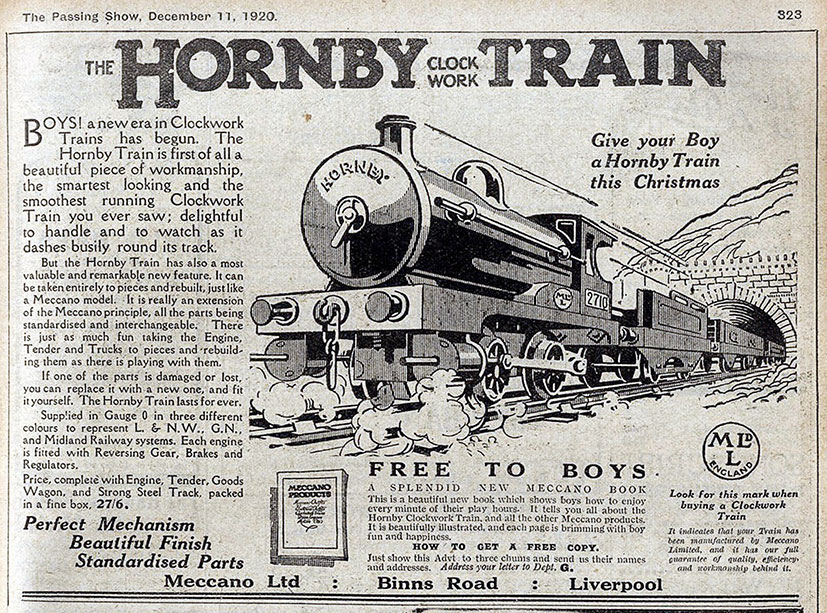
The story began in 1920, when Frank Hornby produced ‘The Hornby Clockwork Train’ toy railway system, which was an extension of his Meccano range, a ‘Meccano model of an altogether new and delightful type’ that could be assembled, and dismantled, from components that adhered to the principles of the company. New parts could be purchased and fitted by the owner, as Hornby positively encouraged customers to ‘take them all to pieces and refashion them’ and each set contained an engine and tender in one of three colours, one truck and a set of tinplate track sections that included curves and two straights. The price at launch was 27s/6d, which at the time equated to around four days’ wages for a skilled tradesman, but today equates to around £40.00 (Source: The National Archives Currency Convertor 1270-2017).
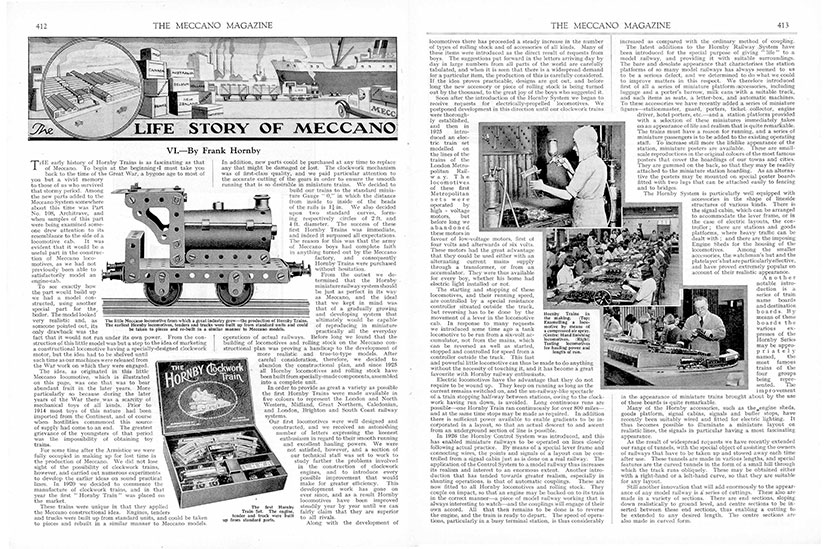
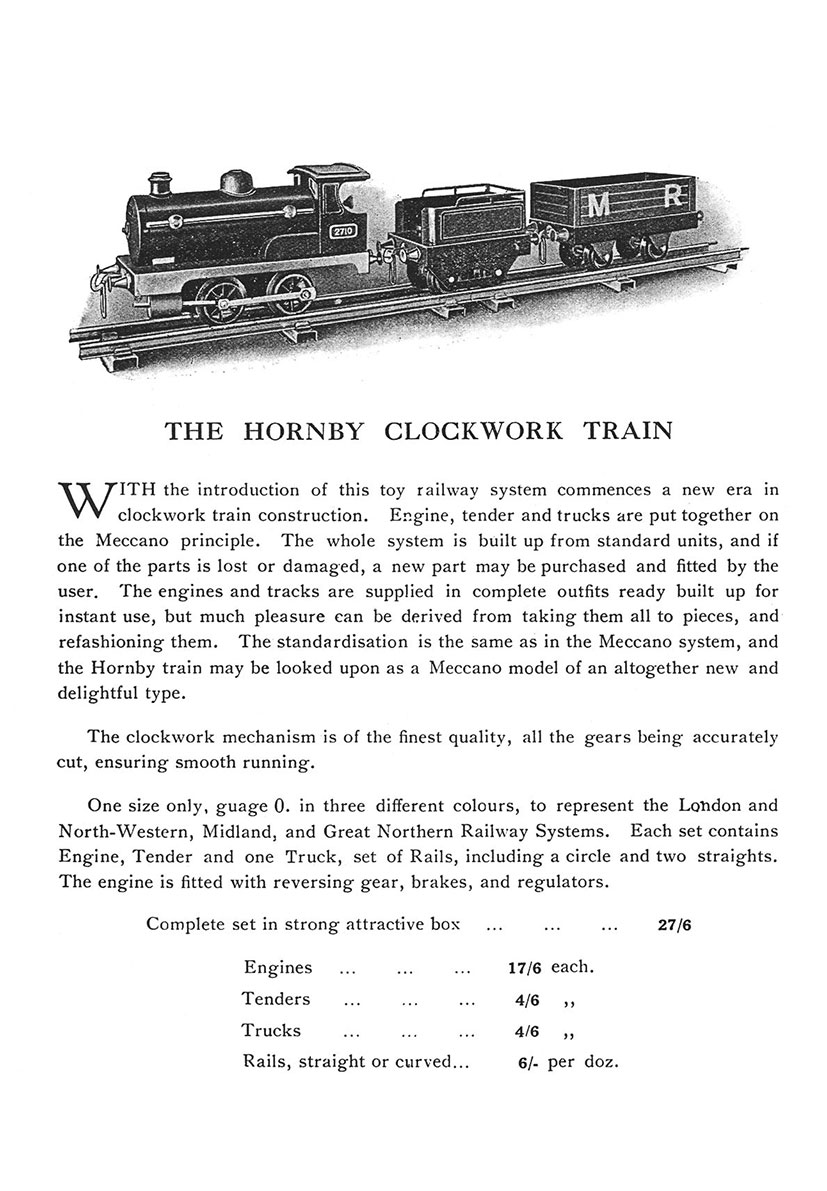

The original three locomotives and their tenders, all numbered as 2710, had nickelled baseplates and were available in one of three enamelled finishes; black to represent the London & North Western Railway, red to represent the Midland Railway or green, representing the Great Northern Railway, with the number plates, buffers, dome and couplings being brass fittings.







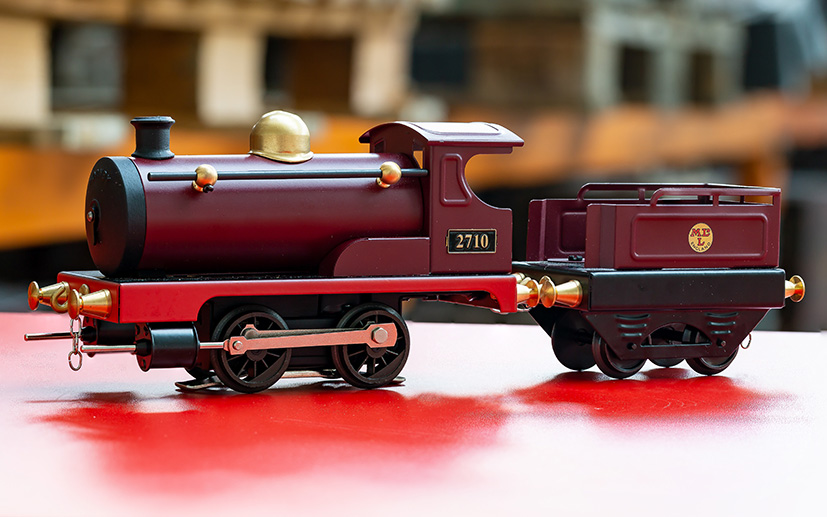
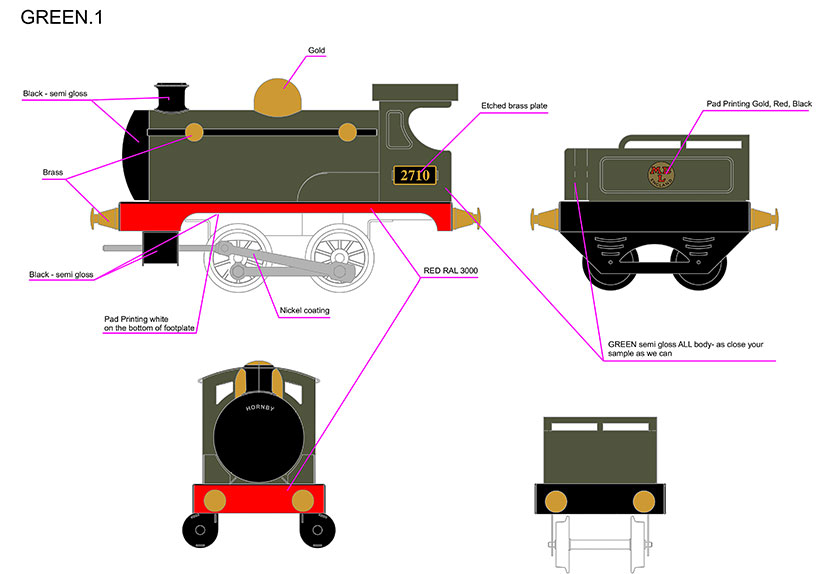
These liveries followed the examples of the German heritage models marketed by Bassett-Lowke prior to 1914 and Frank Hornby’s post-war Meccano considered it was their patriotic duty to usurp these models with British made equivalents, even being encouraged by the government of the time to ‘produce clockwork trains to replace those which used to be imported from the continent’. Although planned for introduction in late 1920, the fourth livery, blue, to represent the Caledonian Railway, did not appear until 1921 with the May/June 1921 issue of the Meccano Magazine promising a fifth livery set to represent the London Brighton & South Coast Railway, which again was one of the Bassett-Lowke ‘German’ models. With expectations of an Umber colour scheme, for decades this LB&SCR No.1 Set was considered an enigma, with no examples appearing to have been made, but in the late 1990s (according to Ian Harrison and Pat Hammond), an example was unearthed which carried an LB&SCR sticker on the box and contained locomotive, tender and coaches finished in the LNWR black, but with LB&SCR transfers.

As the original Hornby locomotive, the inclusion of a tinplate replica of 2710 was an absolute ‘must’ for the Centenary Year range and the development process began in September 2018, with plans being drawn up to create a 12v DC version of the model that adhered to the original model specifications as far as modern manufacturing standards would allow. In mid-January 2019 a visit to the vendor resulted in the production of the first prototype model during late March and with very few alterations made, manufacturing commenced shortly after, with the first 100 models being received into Hornby’s warehouse during December, ready for despatch following the announcement of the 2020 range in January.
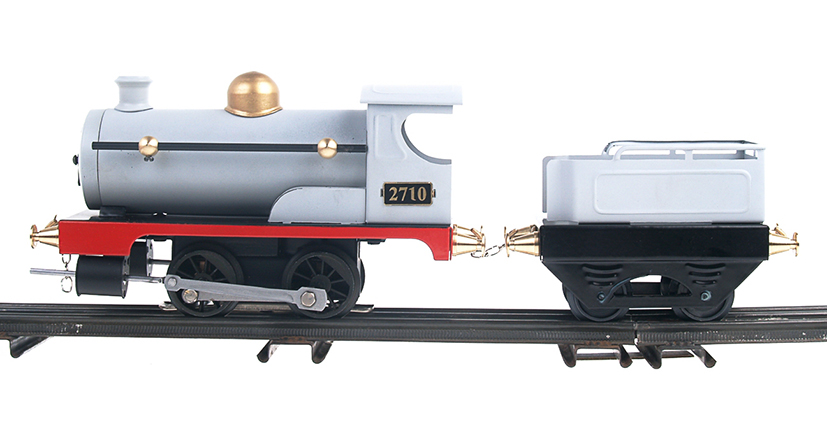
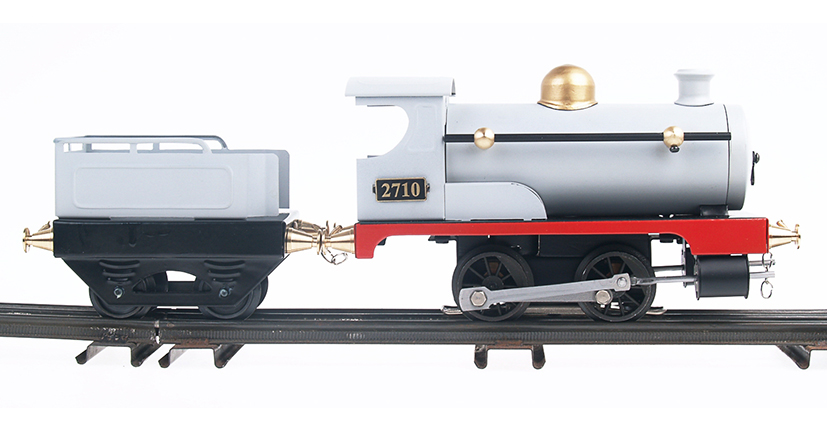
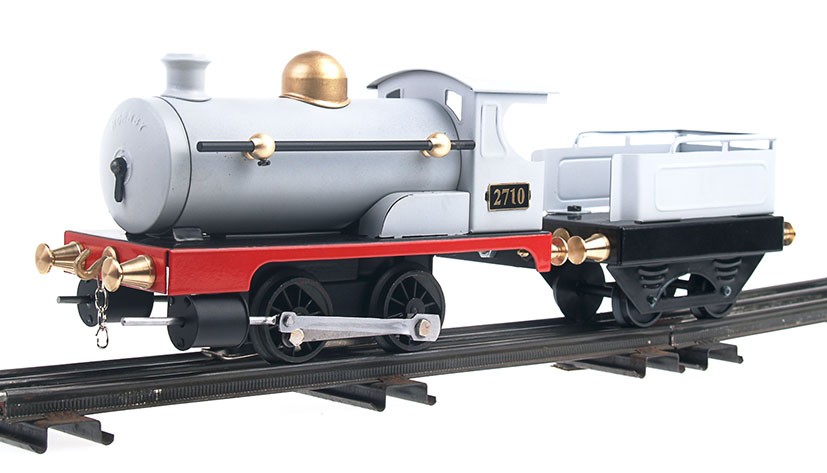

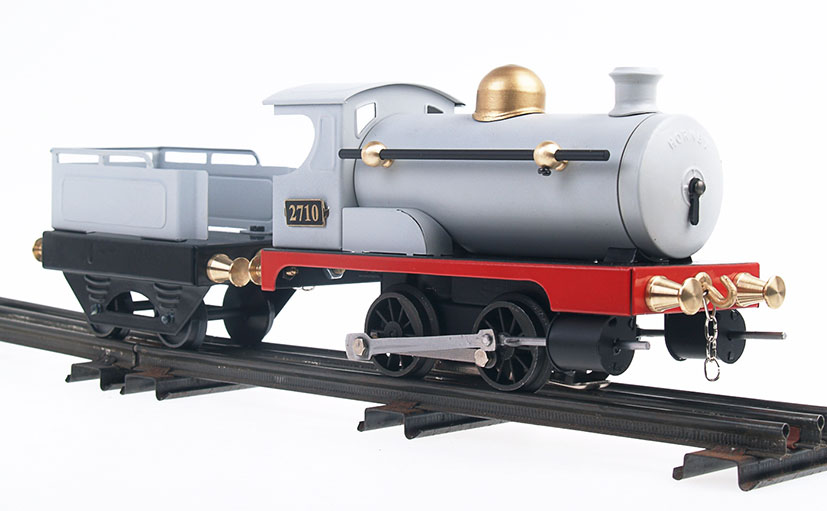
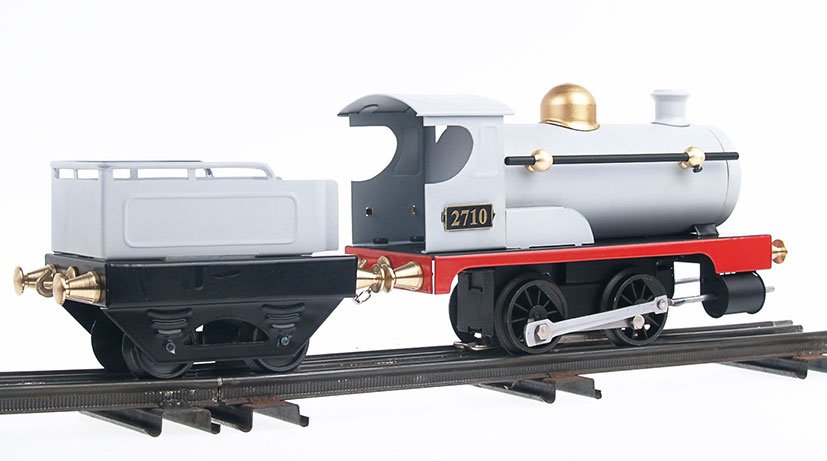
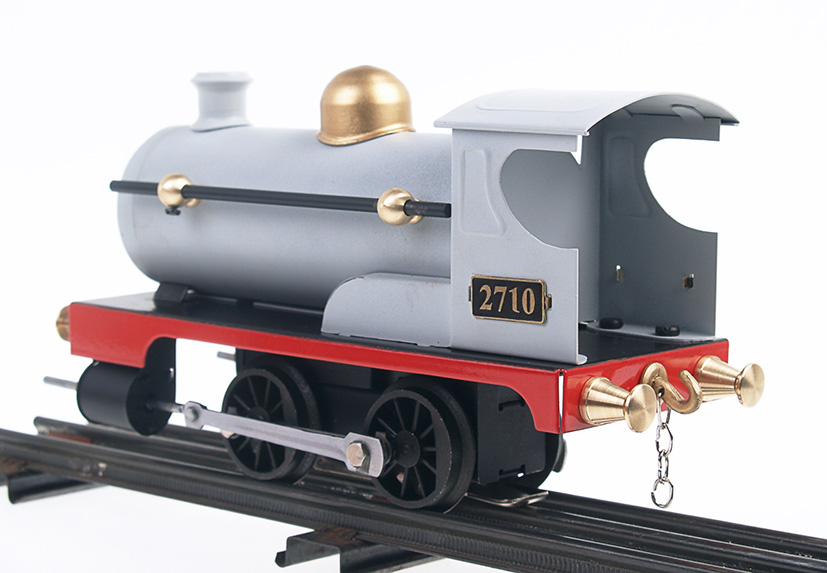
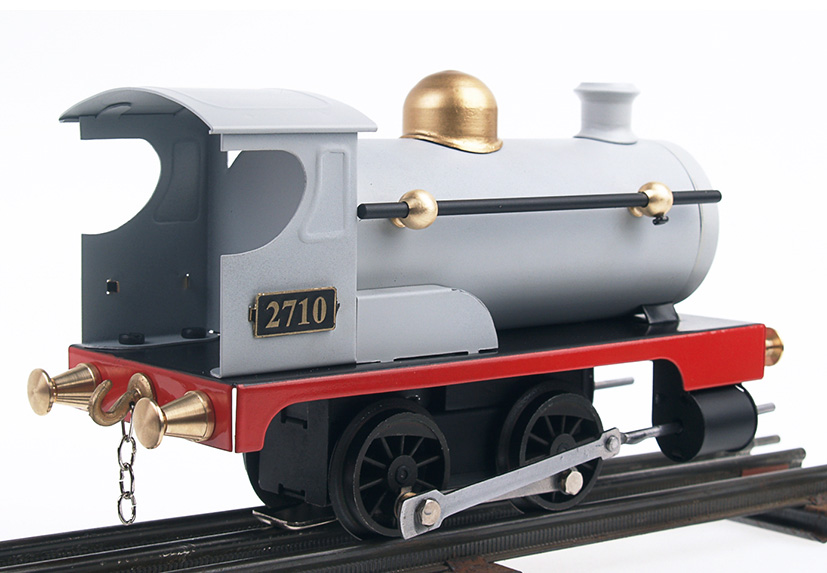
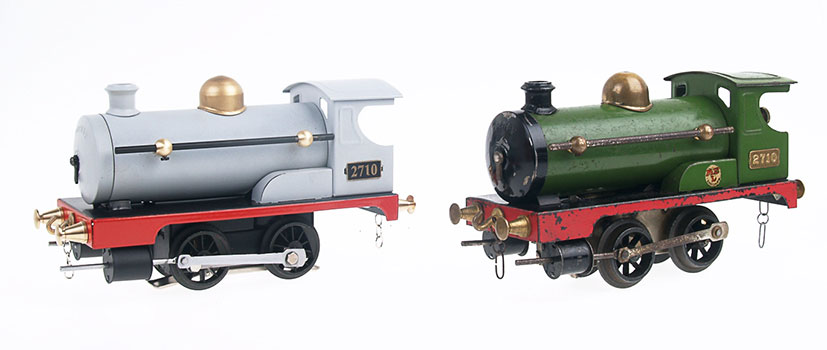

Where Hornby had profited from a post-war boom with the 0 gauge Hornby Series, the introduction of the 00 Gauge Hornby ‘Dublo’ range in 1938, although very successful, was curtailed by the onset of the Second World War. The 1939-40 Hornby Book of Trains proudly announced the forthcoming arrival of the 12v DC, die-cast bodied 6231 Duchess of Atholl, but it was to be December 1947 before Meccano Magazine carried the news that the model would be in the shops at the beginning of 1948, nine years after having been announced.

This delay to the release of the model meant that the Duchess of Atholl that graced the cover of the 1939-40 differed from that which was released, in that it had gained a double chimney (as had the prototype, in June 1940). In the event, Duchess of Atholl also gained smoke deflectors during September 1946, but this was not reflected on Hornby’s model until 1949-50.
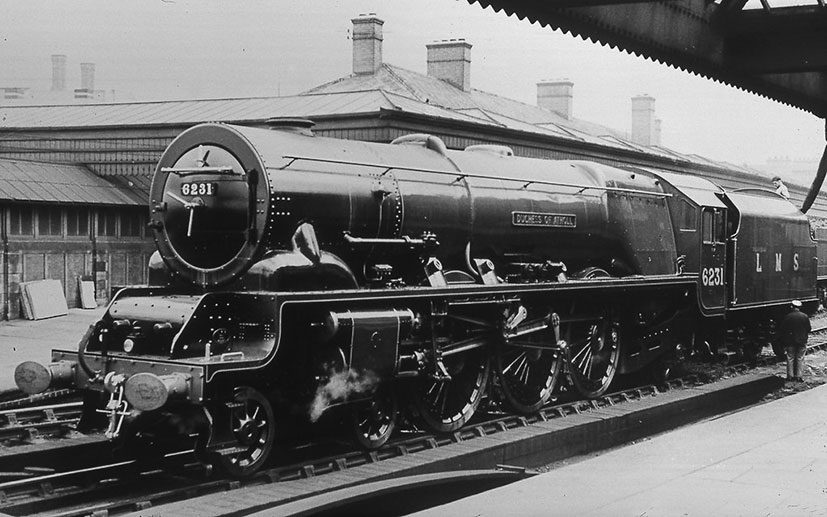
6231 Duchess of Atholl at Shrewsbury, circa 1935, with original single chimney. © Rail-Online
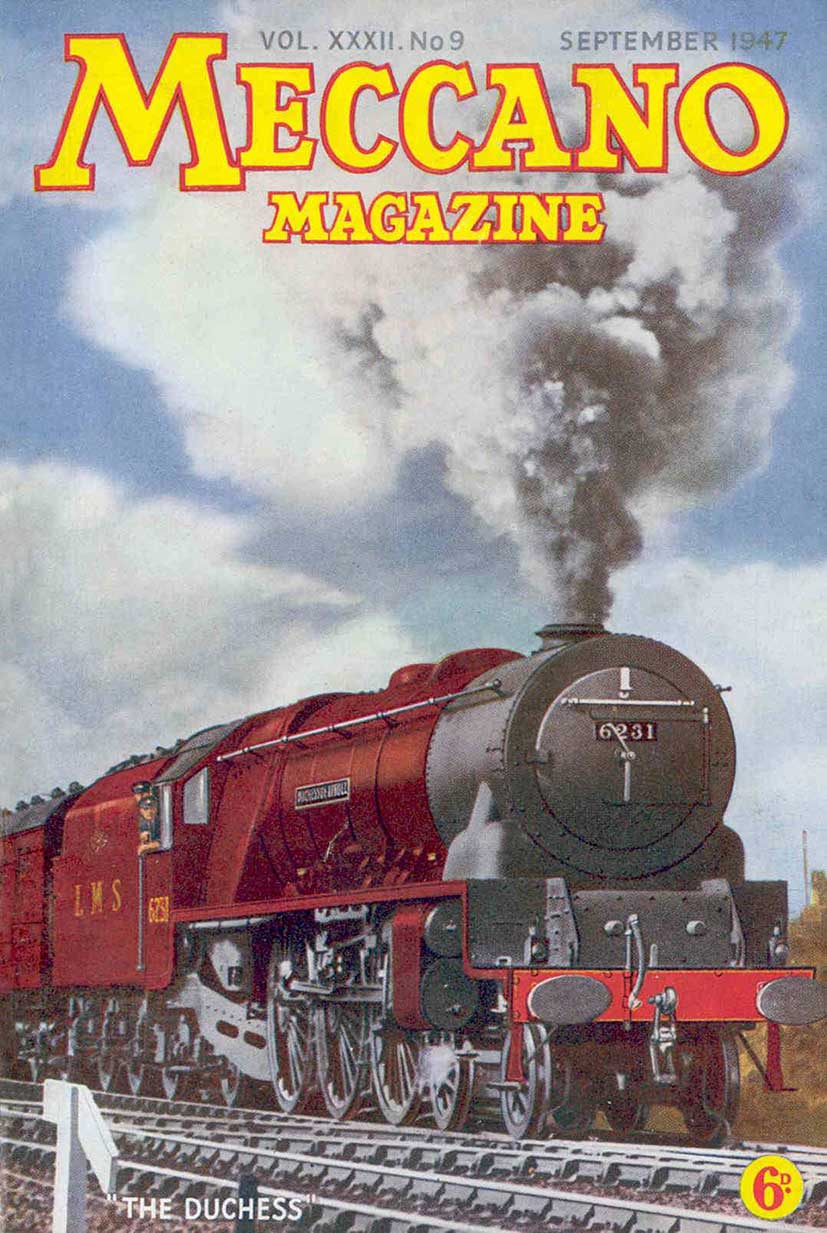

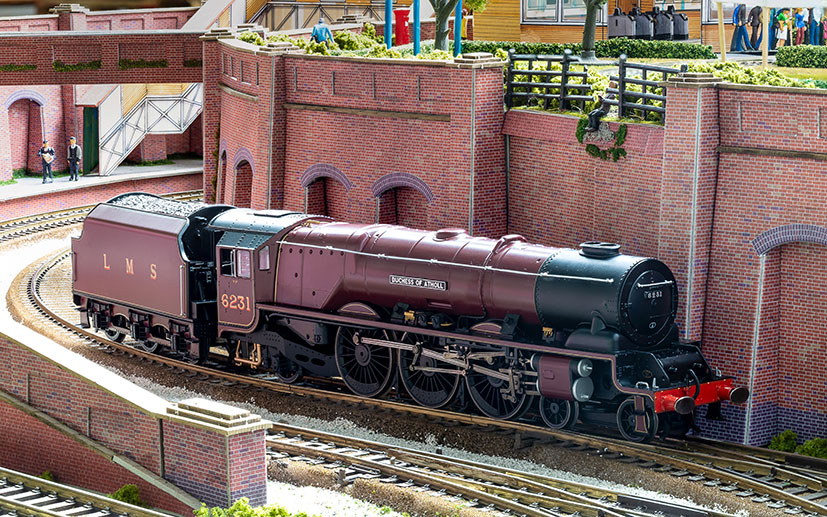
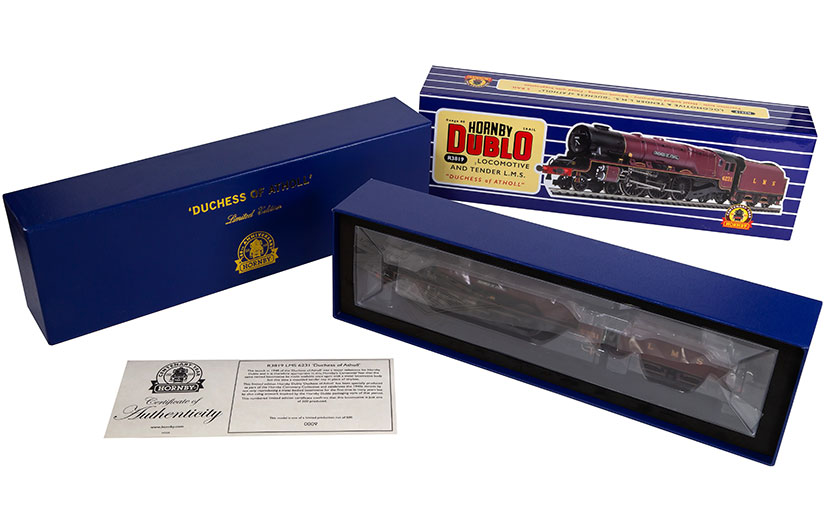
While 6231 Duchess of Atholl had to wait until 1948 for release, the Dublo train set featuring 4498 Sir Nigel Gresley was released as intended in 1939, with queues forming in shops as soon as the sets arrived in store. The original set featured 4498 Sir Nigel Gresley with a full valance, the corridor tender and a two-coach articulated unit and while the coaches in the R1252M Sir Nigel Gresley set are separate vehicles, in all other respects the Centenary Year Limited Edition Set is as faithful to the original as is possible.
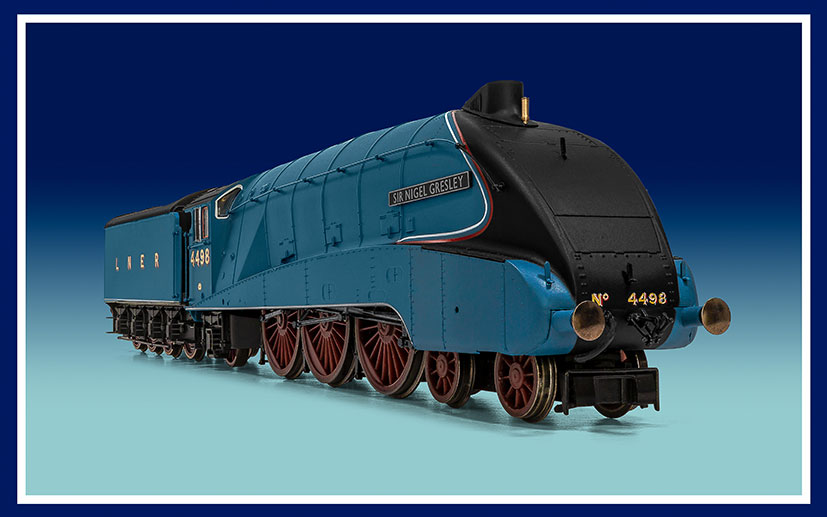
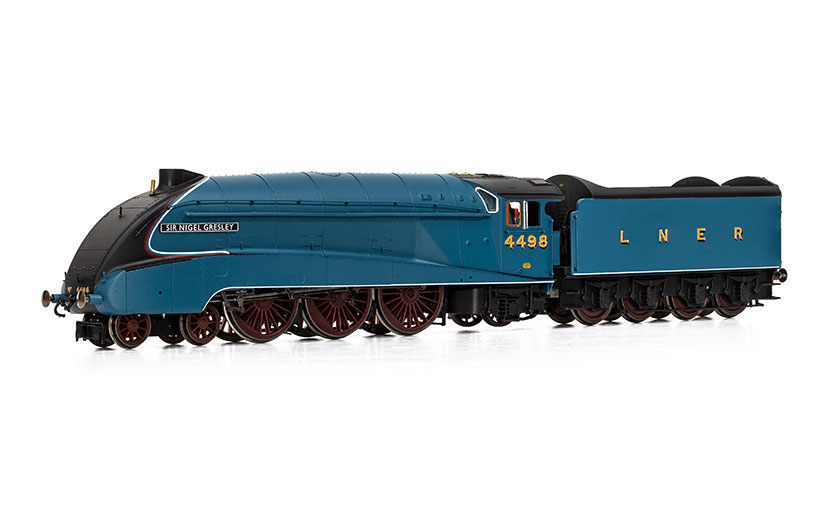

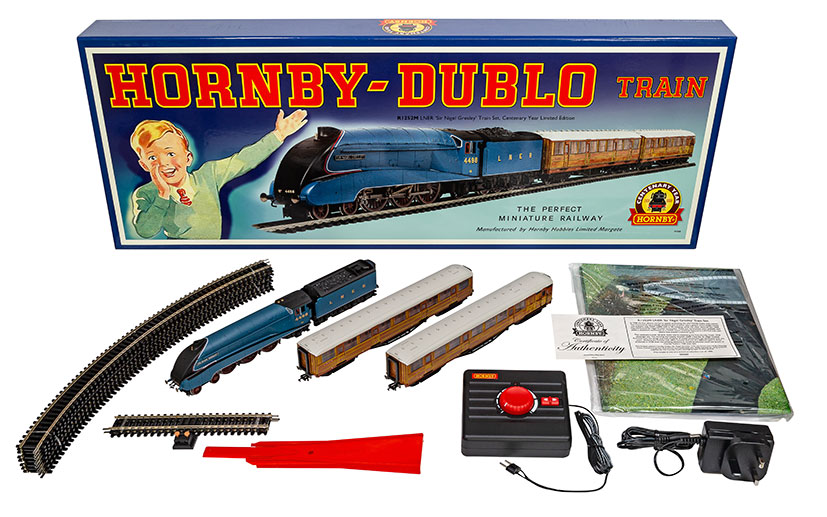

In December 1957, the Meccano Magazine proudly announced the arrival of a new range of Dinky die-cast models, the Dinky Dublo range, stating that “As the name Dublo Dinky Toys implies, the scale is that of Gauge 00 model railways, so they are just the thing for combined road and rail layouts. The models are made with the typical attention to detail and the excellence of finish that are the characteristics of all Dinky Toys.”
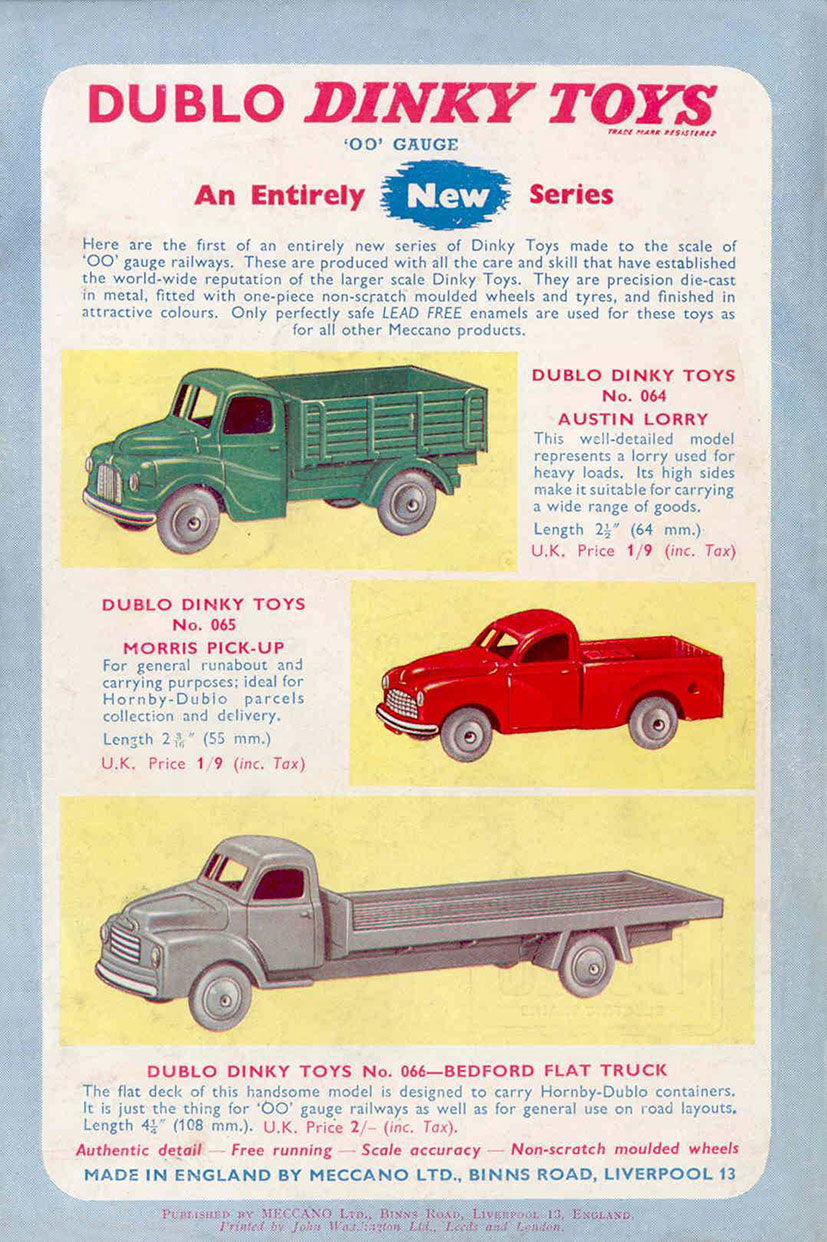
The range of Dinky Dublo models available was never large, and the production timelines of some models meant that the fifteen models manufactured were never actually all listed together in the range at the same time. Altogether, the models in the Dinky Dublo range comprised the following:
061: Ford Prefect
062: Singer Roadster, yellow
063: Commer Van, blue
064: Austin Lorry, green
065: Morris Pickup Truck, red
066: Bedford Flat Truck, pale grey, accepts Dublo meat and furniture shipping containers
067: Austin Taxi
068: Royal Mail Van
069: Massey-Harris-Ferguson Tractor, blue, also included in Dublo "Flatbed trailer with tractor"
070: A.E.C. Mercury Tanker (Shell B.P. Petroleum Products), red tanker with green cab, and plastic windows
071: Volkswagen Delivery Van
072: Bedford Articulated Truck
073: Land Rover, green, with Horse Trailer and Horse
076: Lansing Bagnall Tractor and Trailer (an electric railway station baggage-transfer vehicle, rather than an agricultural tractor)
078: Lansing Bagnall Trailer only
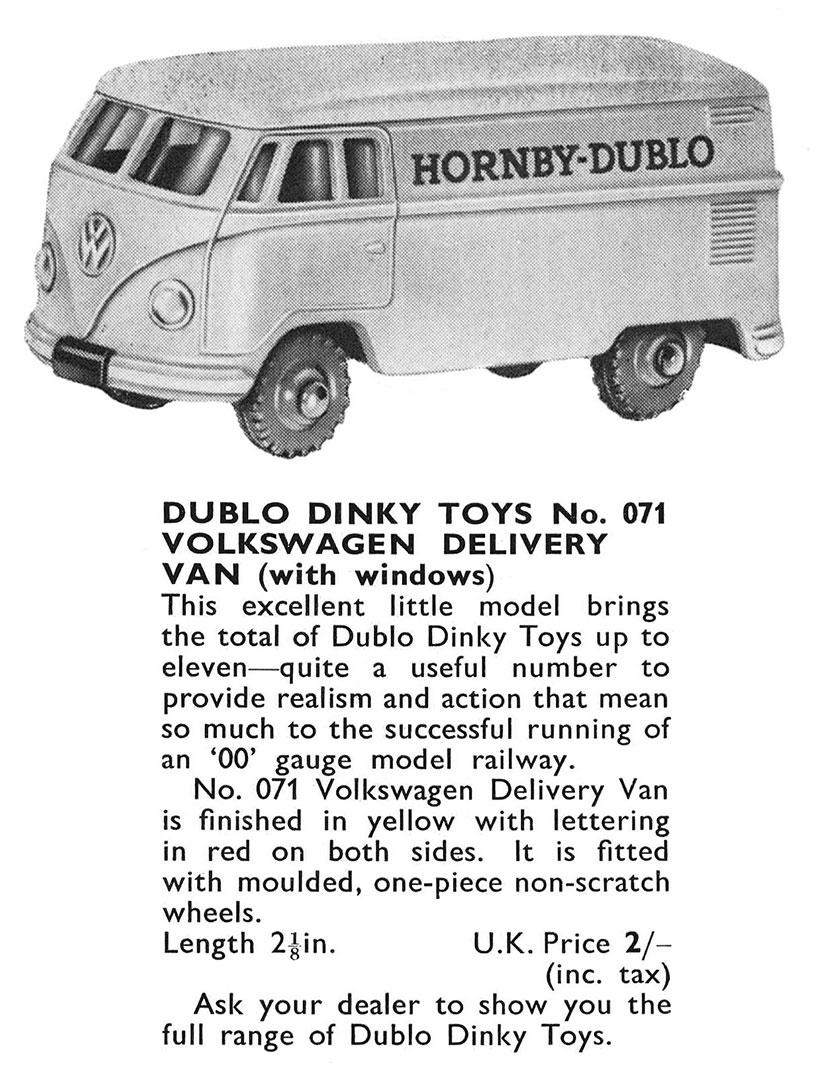
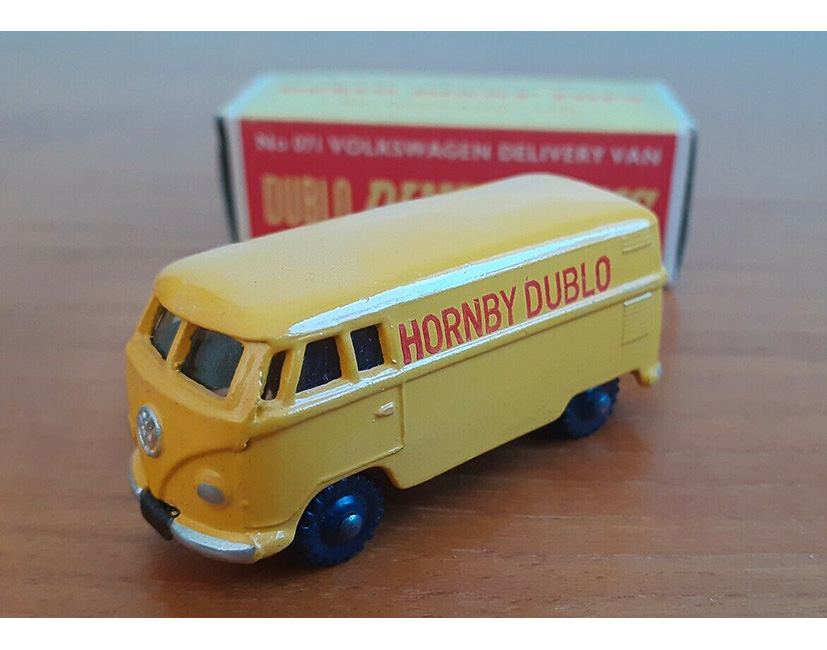
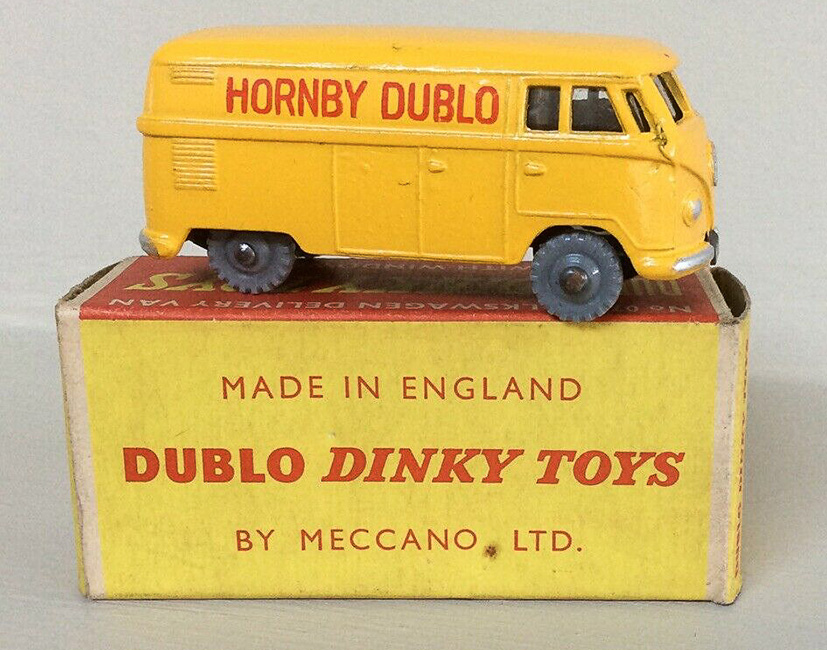
In creating the current Dublo Diecast models, R7248, the VW T2 Van, is a faithful replica of a former model, with the remaining five vehicles being selected to reflect the character of the former Dinky Dublo range. However, it is interesting to note that R7249, the Scammell Mechanical Horse, was introduced to the Dinky ‘standard’ range in 1935 and went on to become one of Dinky’s most popular models, with a number of different variants being manufactured.
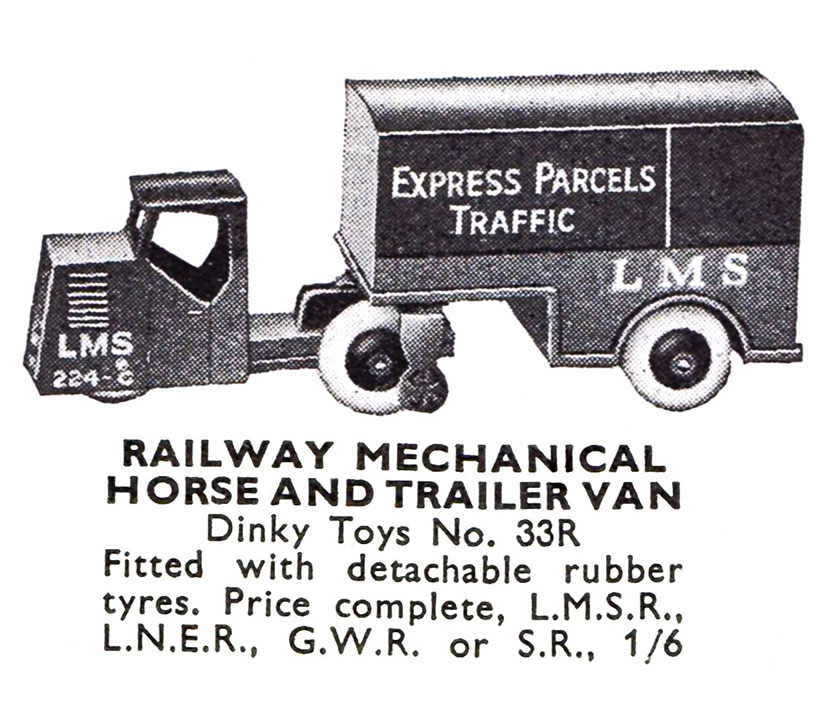
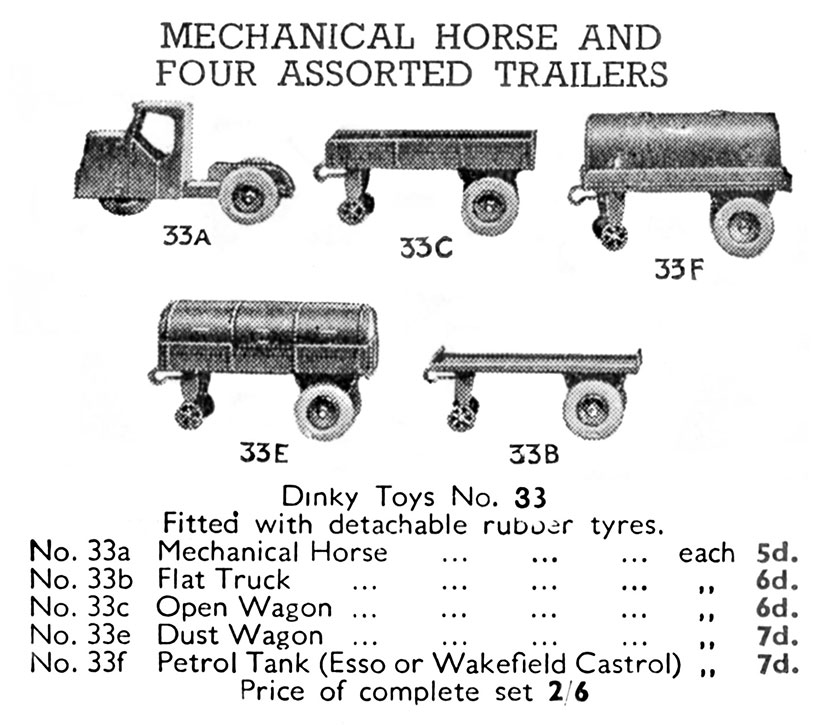
Although the models were selected for their reflection of 1950s era vehicles, R7242 has created a strong interest for model railway enthusiasts today, as the Morris J Type Van has been resurrected as the Morris Commercial Type JE Van, its form having changed very little from its unveiling at the 1948 Earls Court Commercial Motor Show. Going into production in 1949, the diminutive van benefited from a low floor with two wide-opening rear doors, as well as two sliding side doors, which allowed for fast loading and unloading and this made it the vehicle of choice for the various Co-operative fleets, Liberty of London, John Lewis, Dunlop and Tiffany's, to name but a few.
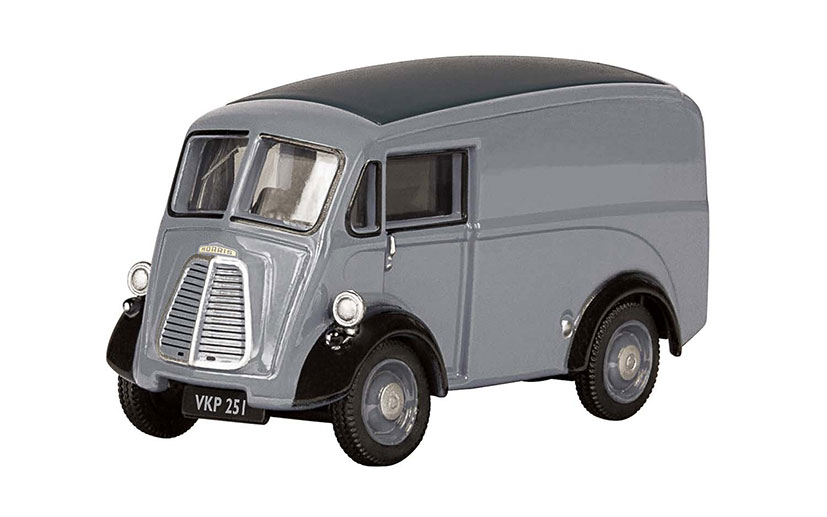

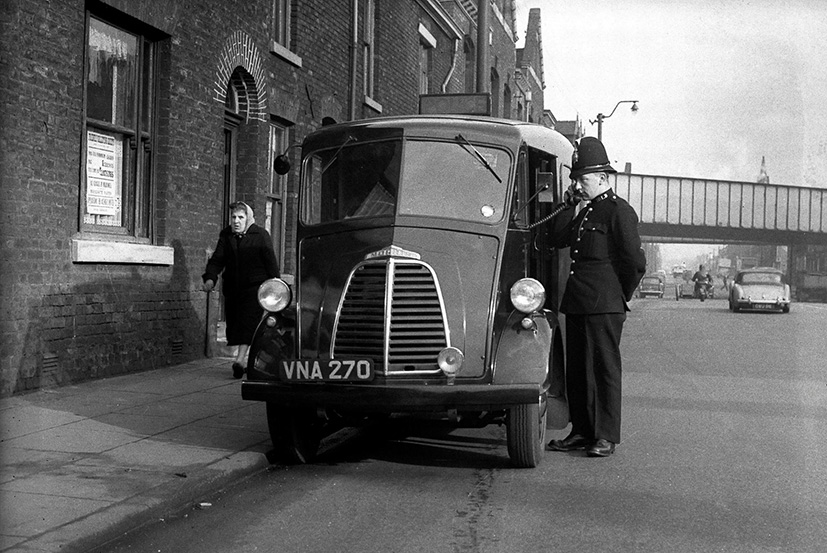

The J Type was also sold as a van and chassis cab for coachbuilders, providing the perfect base for a wide variety of body styles which were favoured by milkmen, bakers, department stores and a whole range of local businesses. The J Type was also built as a pick-up truck, ambulance, milk-float, mobile snack bar, nine-seater minibus and camper van and was even used by Walls Ice Cream as a delivery van, by the RAC as a service van and by the Royal Mail; the single largest purchaser of the Morris J Type, with over 17,000 vehicles in their fleet being used as postal delivery and planning vans.
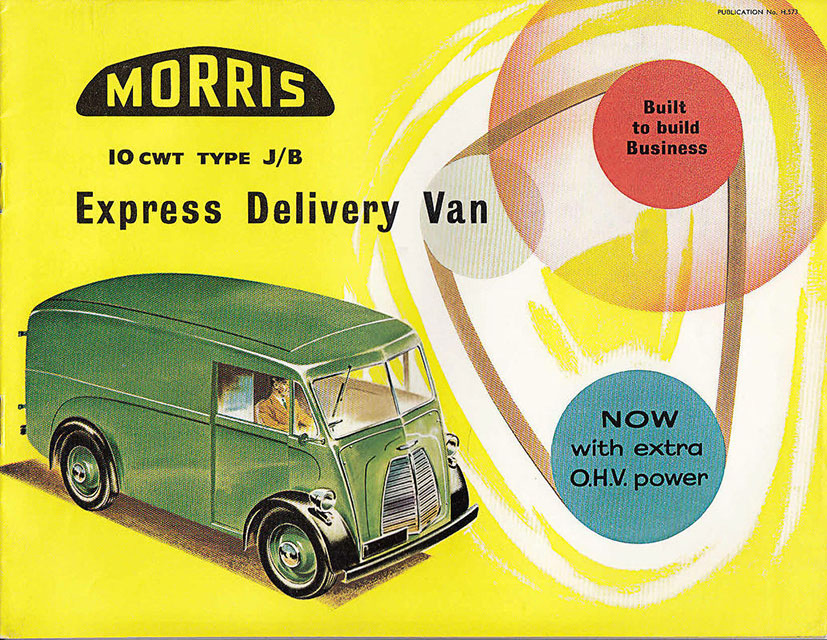
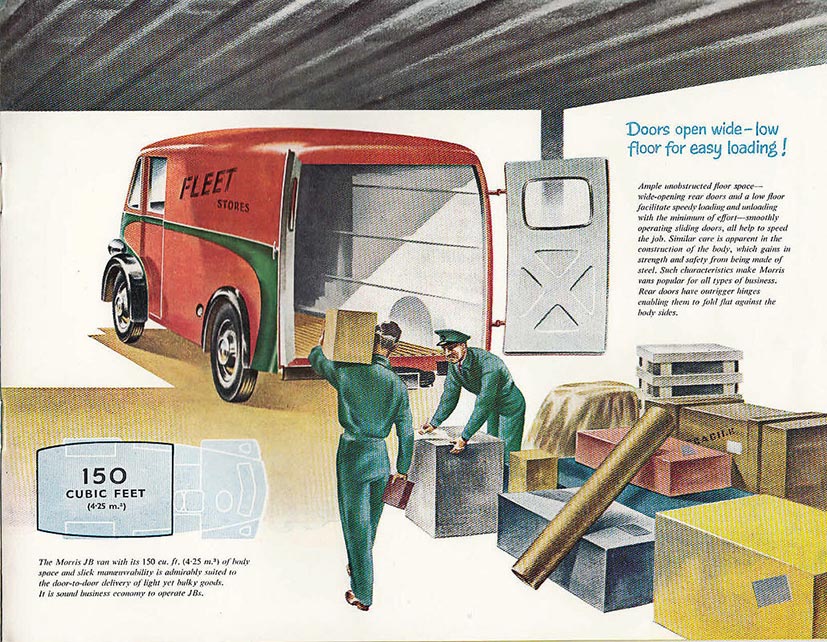

As a footnote to the history of the J Type, in 2017 the drawings for a new Morris JE began to take shape, with the project being a well-kept secret during the development phase which was carried out in the UK with the help of industry experts from across Europe. The headquarters and production facility for the new Morris Commercial are based in the UK and a prototype is already undergoing road testing.

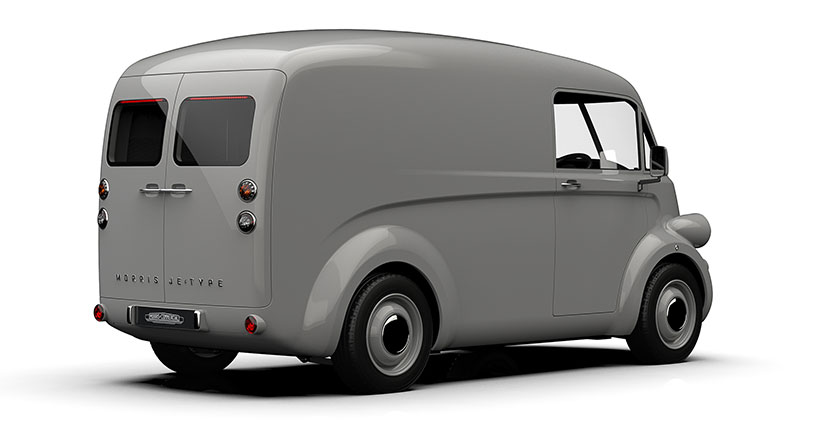

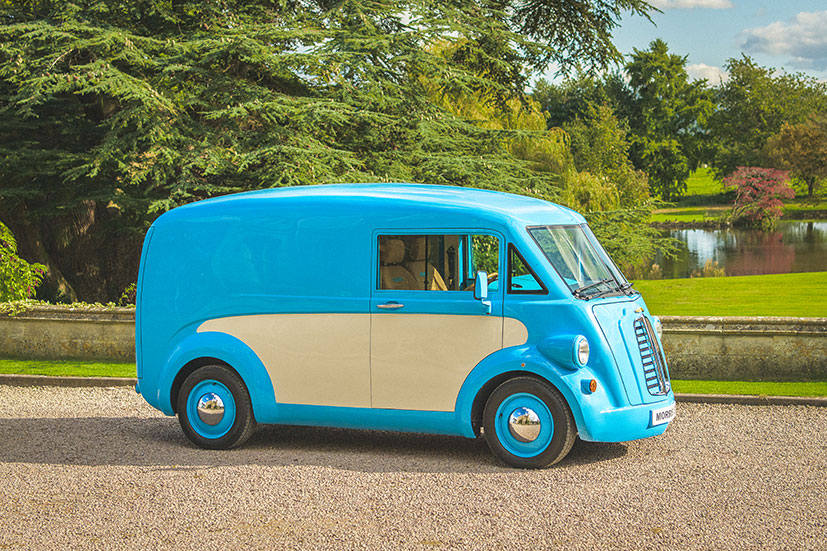
The first Morris JE vans are due to leave the production line towards the end of 2021. © Morris-Commercial Ltd.
92220 Evening Star was the last new tooling produced by Tri-ang Hornby in 1971, branded as part of the Silver Seal range and the first locomotive produced under the Tri-ang Hornby name that was powered by a Ringfield motor installed in the tender. Lines Bros had actually entered into receivership when Evening Star was launched and so the Tri-ang Hornby name was, at this time, part of Pocketmoney Toys Ltd, a trading name created by the Receiver while a buyer was sought for the company.
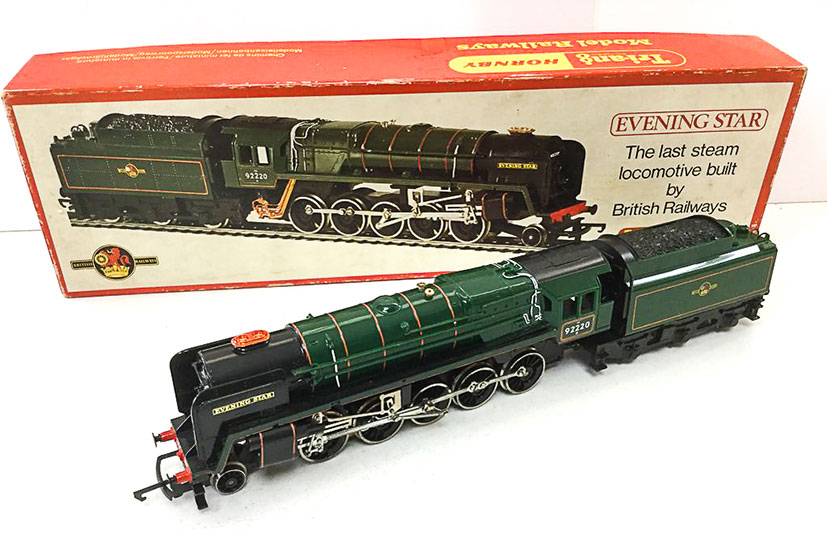
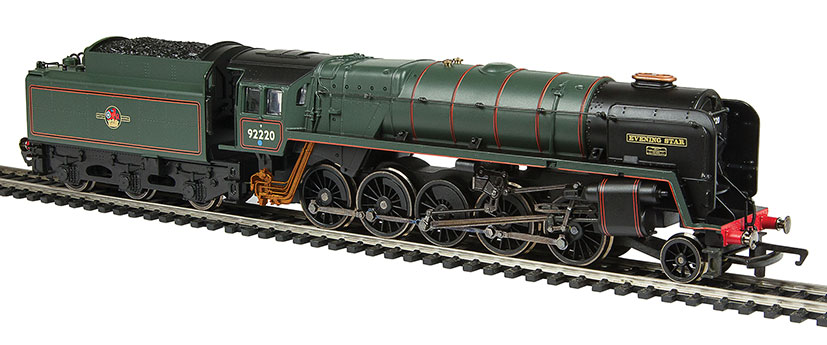
The model of 92220 Evening Star set new standards for Hornby, not only in being technically difficult to produce but also in terms of outright quality and it was described by the Railway Modeller as ‘one of the best scale models that Tri-ang Hornby have yet produced’. The Model Railway Constructor went even further with its praise, stating that Evening Star was, ‘a model of which we, the British, can be proud and it will stand comparison with the best, a near perfect 4mm scale representation of the original, one of the finest proprietary models manufactured in the British Isles’.
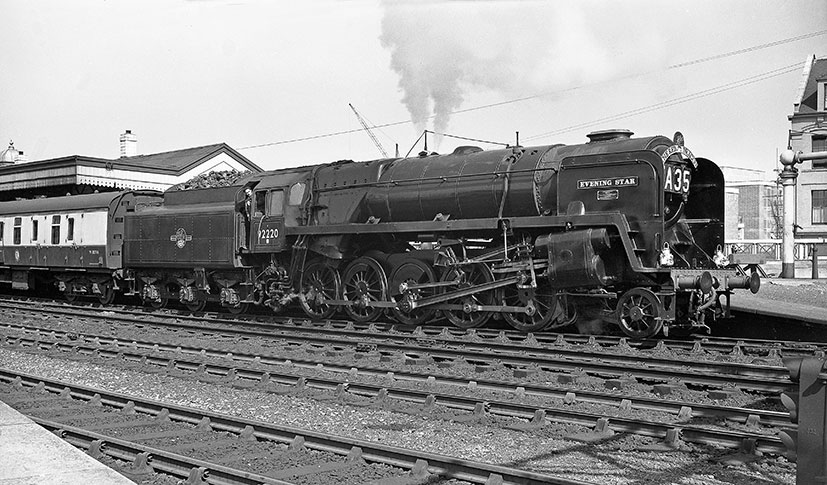
92220 Evening Star waits to leave Cardiff General with the up 'Red Dragon' on 1 July 1960. © R.O. Tuck/Rail Archive Stephenson
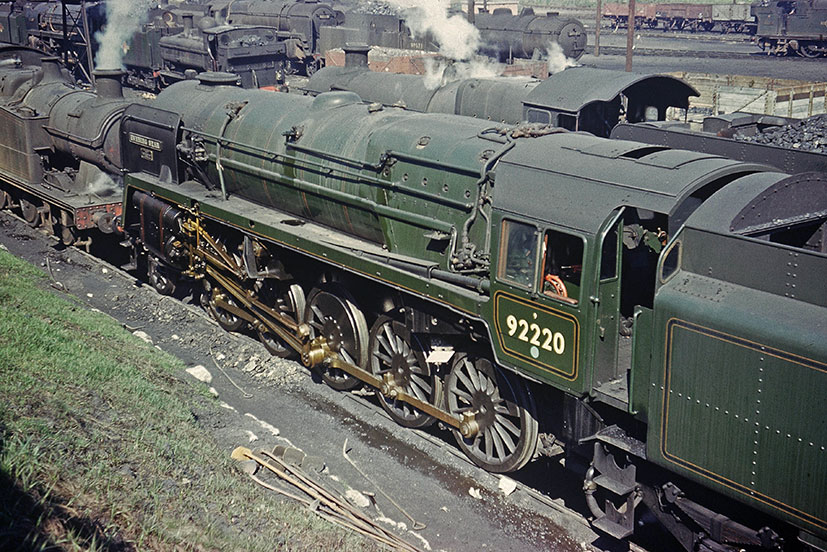
92220 Evening Star on 17 April 1960 © Colour-Rail
The National Archives at Kew hold some interesting files on 92220 Evening Star, mainly relating to the preservation restoration/ownership saga of the locomotive, but what they also reveal is the lengths that the British Railways Board were going to in preventing interested parties viewing 92220 during negotiations for the sale of the locomotive. An embargo was placed upon visitors on 19 November 1968, even including representatives from Ford Europe, but in advance of this Triang-Hornby secured permission to visit the locomotive for a survey visit, as the notes below show.
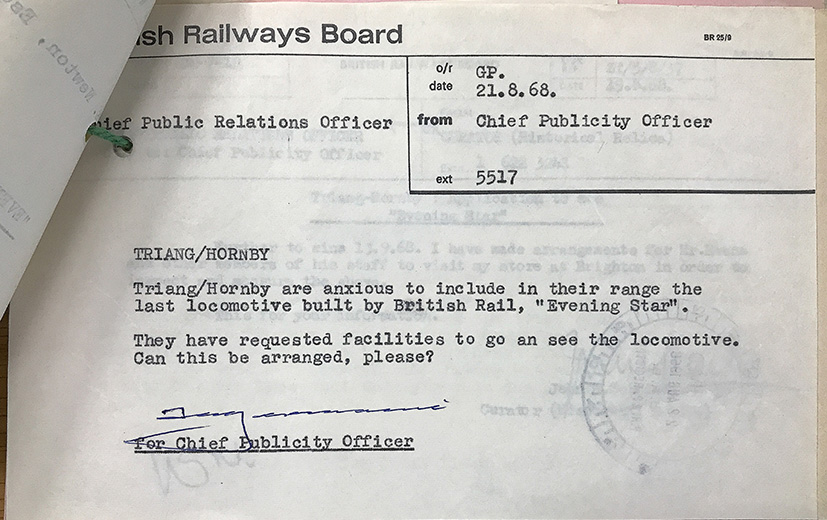
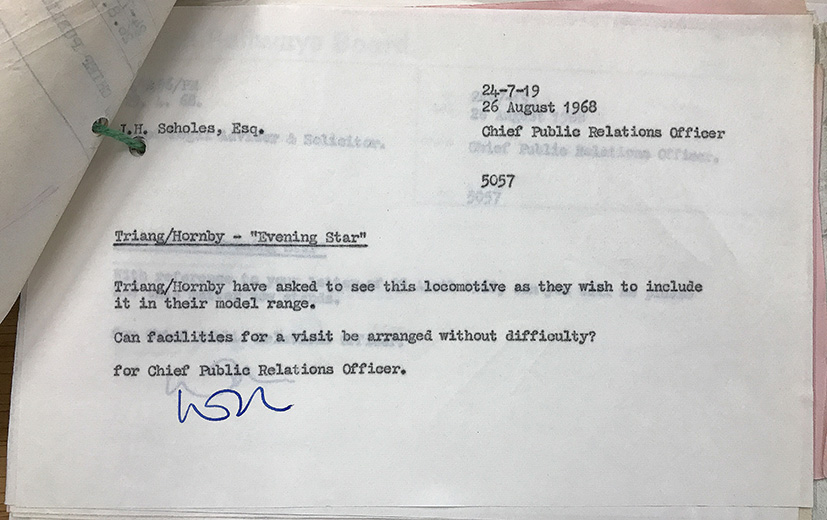
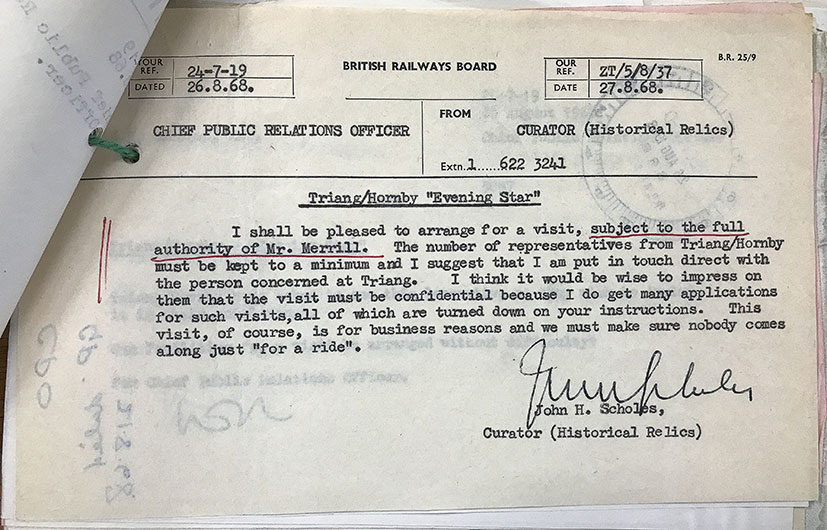
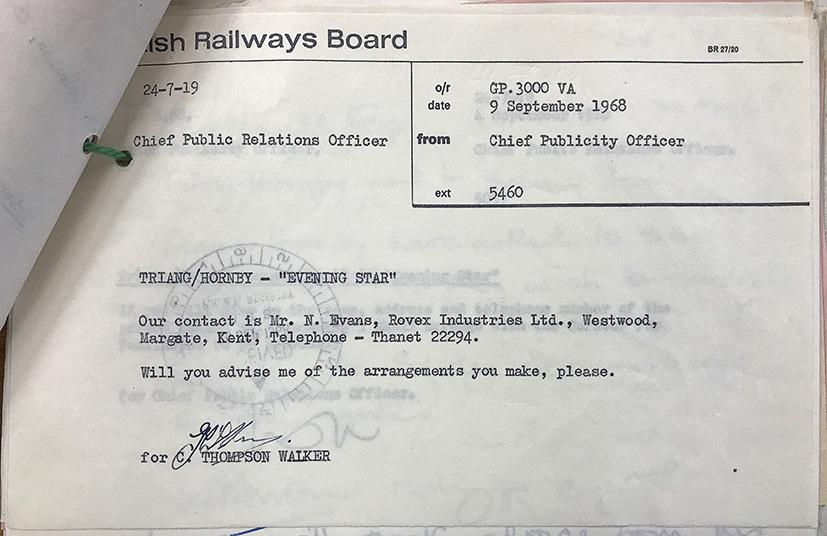
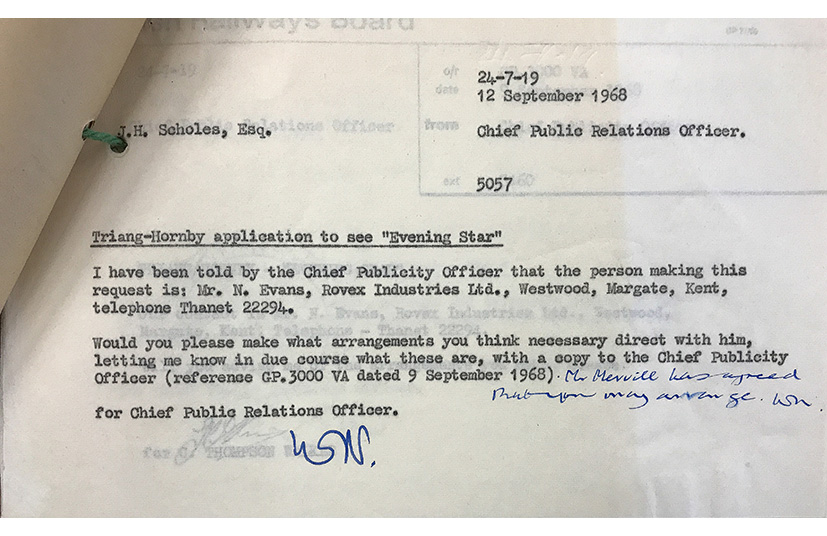


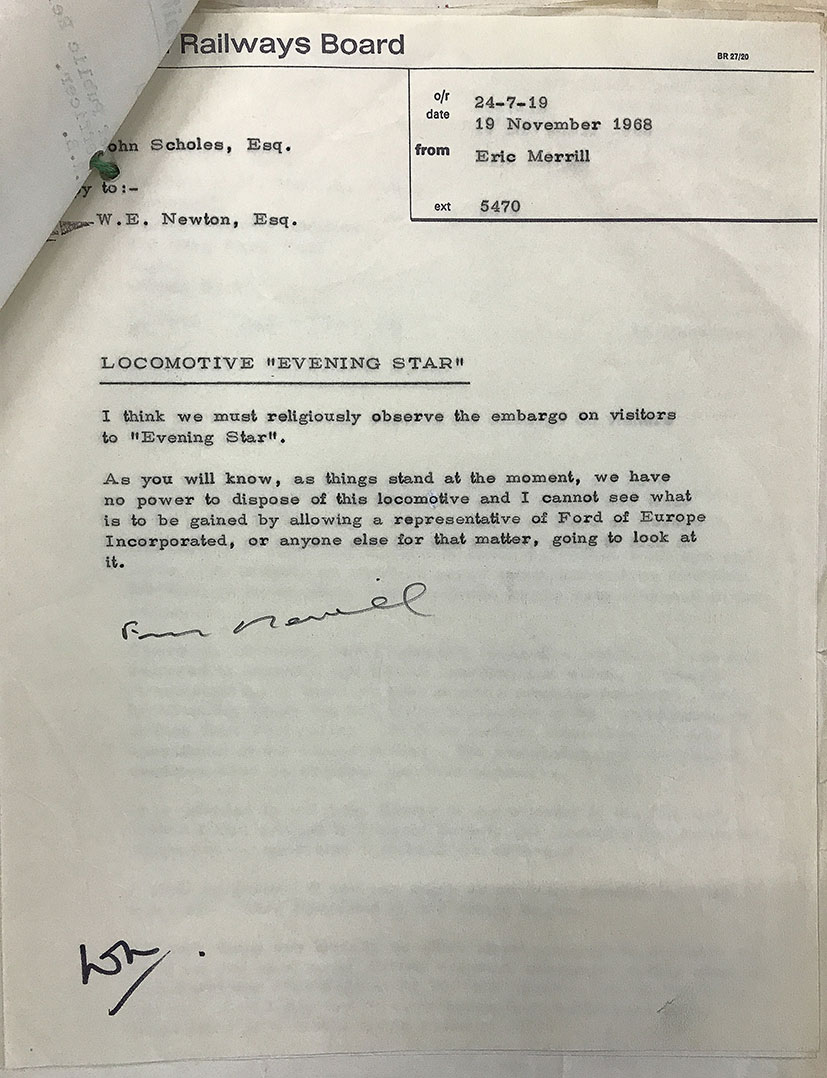
Our final stop on this Engine Shed tour through the Centenary Year products is to the former Caledonian Railway’s St. Rollox Works and Depot in Glasgow, which was unusually built to serve as a locomotive, carriage and wagon works. During the British Railways’ period, an ageing, but cherished Drummond Class 264 0-4-ST scuttled backwards and forwards in the depot, one of fourteen similar class members that had been absorbed into British Railways’ ownership from the LMS and which were used as works’ shunters at various locations.
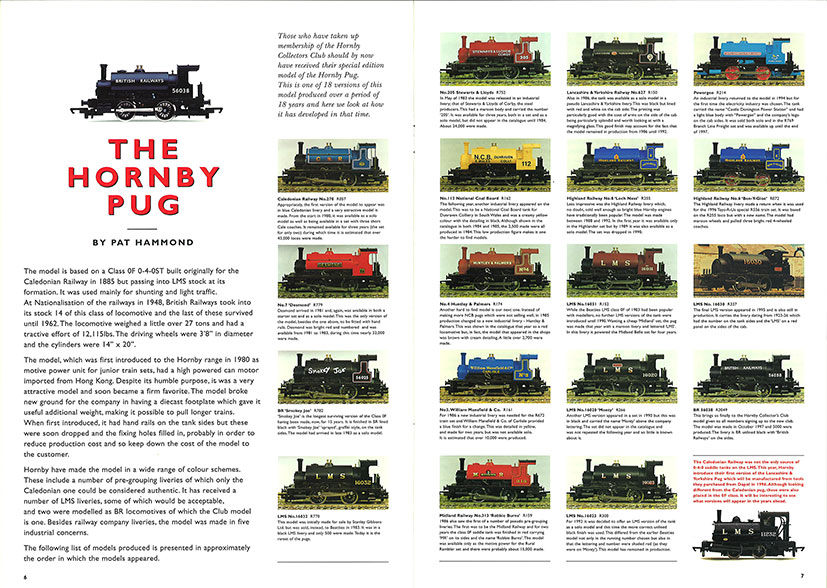
When, in 1983, Hornby were seeking a low-cost 0-4-0 for use in train sets, it was settled that the existing ‘Pug’ model, based on the Class 264, could have its scant detail pared down and two versions were introduced to the range; R752 No. 205 ‘Stewarts & Lloyds, Corby’ in maroon for the Industrial Freight set in May that year and R782 No. 56025 in a simple lined BR Black as a solo item later in the year. When it was commented on by a Scottish customer that he recalled the name ‘Smokey Joe’ being chalked on the boiler sides of one such locomotive, the name was added to the artwork for the model and the rest, as is said, is history. The picture gallery below shows 56025 in various livery stages between 1948 and withdrawal in May 1960, as well as one of 56025’s sister engines with the adapted coal ‘tender’ that the ‘Pugs’ were noted as using.

56025 at St. Rollox in 1948 in British Railways’ transitional livery. © Rail-Online
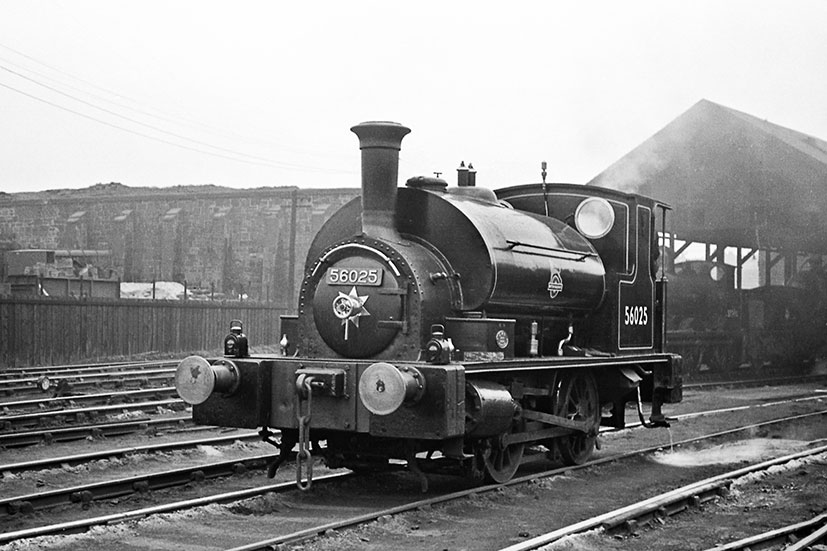
56025 at St. Rollox, 31 May 1950. © Colour-Rail
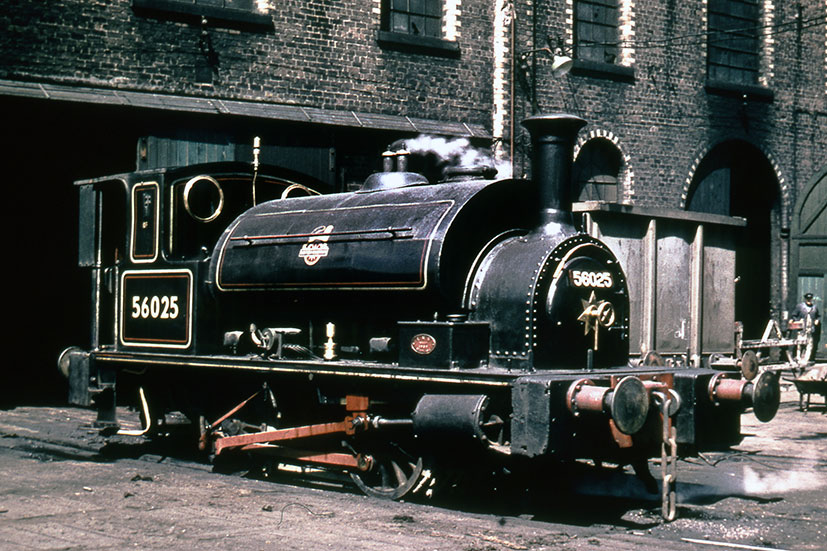
56025 at St. Rollox, lined black, red rods, polished star on smokebox, June 1957. © Colour-Rail

56025 at St. Rollox, lined black, red rods, polished star on smokebox, May 1952. © Colour-Rail
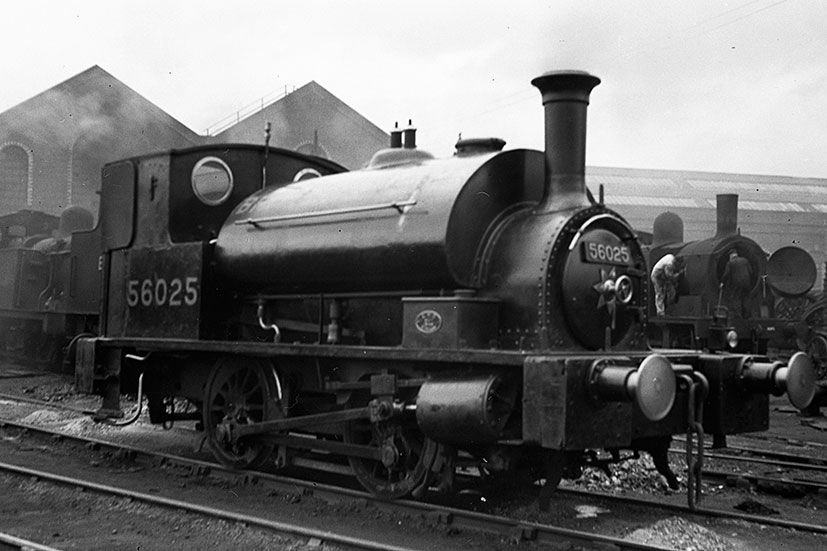
56025 at St. Rollox, 31 August 1949. © Colour-Rail

56025 at St. Rollox, 18 May 1959. © Colour-Rail
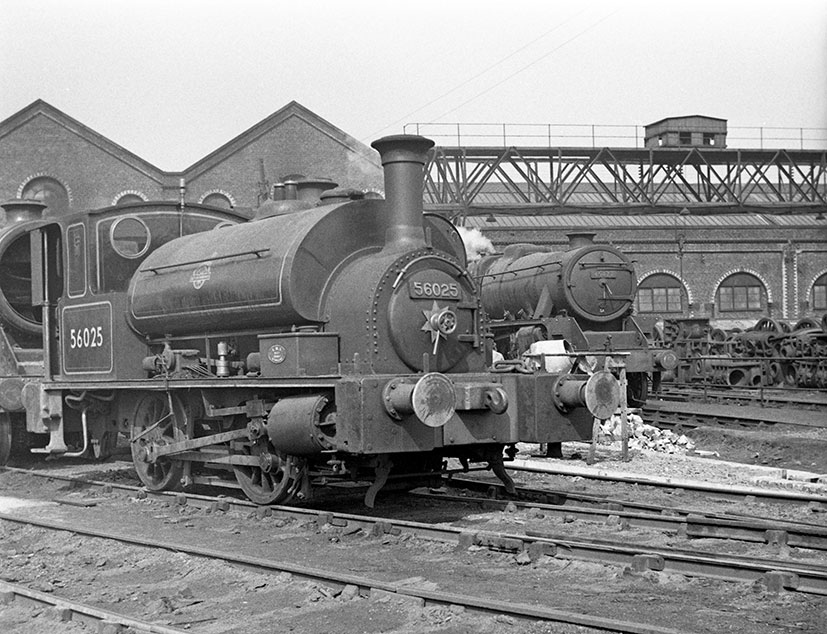
56025 at St. Rollox circa 1960, with Stanier 5MT 45472 in the background. © Rail-Online
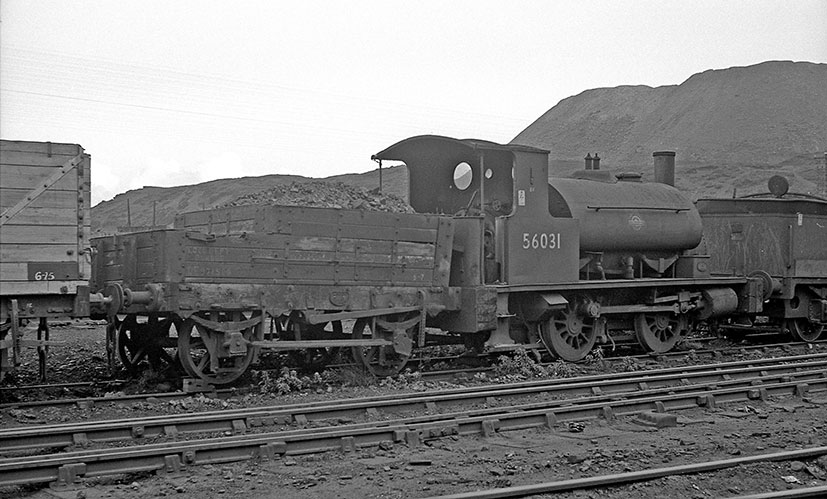
56031 at Kipps Shed, 26 August 1961 with an adapted coal ‘tender’ that was a familiar sight behind the ‘Pugs’. © Rail-Online



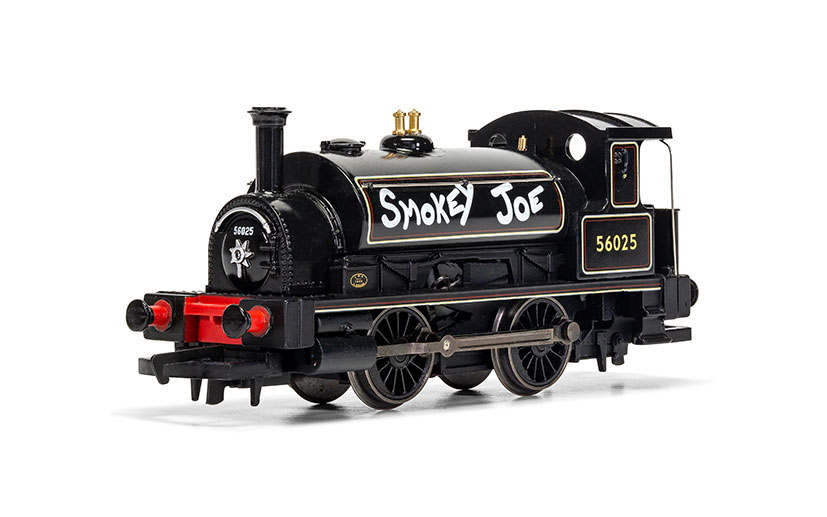
The next regular edition of the Engine Shed will be with you on the 14th August where we hope to be in a position to update you on progress with the new tool items from the 2020 range, as well as unveiling livery artwork and (hopefully) some engineering and decoration samples, but in the meantime we would like to remind everyone of the ‘Golden Ticket’ promotion that we have running.
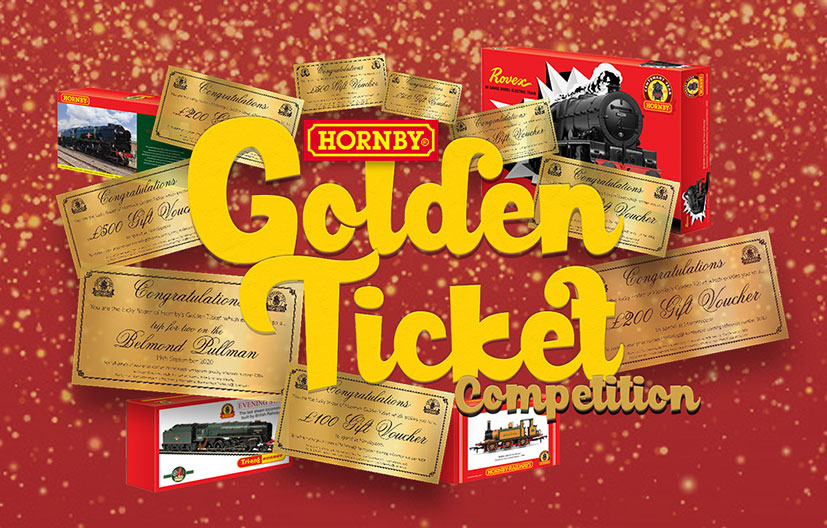
As part of our Centenary Celebrations, we have placed ten ‘Golden Tickets’ in various Centenary product boxes (Dublo Diecast Vehicle Collection excluded). Nine of the Golden Tickets are for a cash value of up to £500 (to be redeemed on the Hornby website), but the tenth ticket is for a special trip, for two, on a Belmond Pullman Experience (date to be confirmed, due to disruptions caused by the Covid-19 crisis). To be in with a chance of winning a lucky Golden Ticket and receiving one of these fantastic prizes you will need to check within your Centenary product box, just as Tara, our sole winner so far, did.
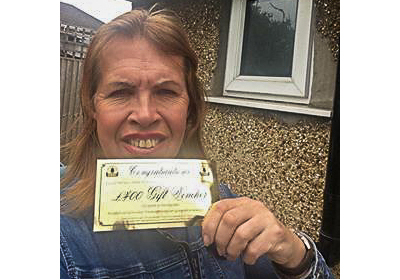

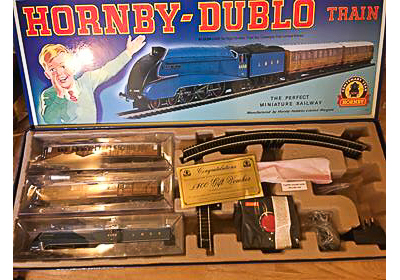
In the meantime, to prevent any chance of boredom during the school reduced timetable period and holidays, we have created the Hornby Kids’ Zone to keep your young railway enthusiasts (and some older enthusiasts as well, if some of the entries are anything to go by) out of mischief. The Freestyle Drawing Competition drew a large number of entries and we are pleased to say that ten year old Benjamin Dobbie was our lucky winner on this occasion, but keep a look out for new competitions coming soon!
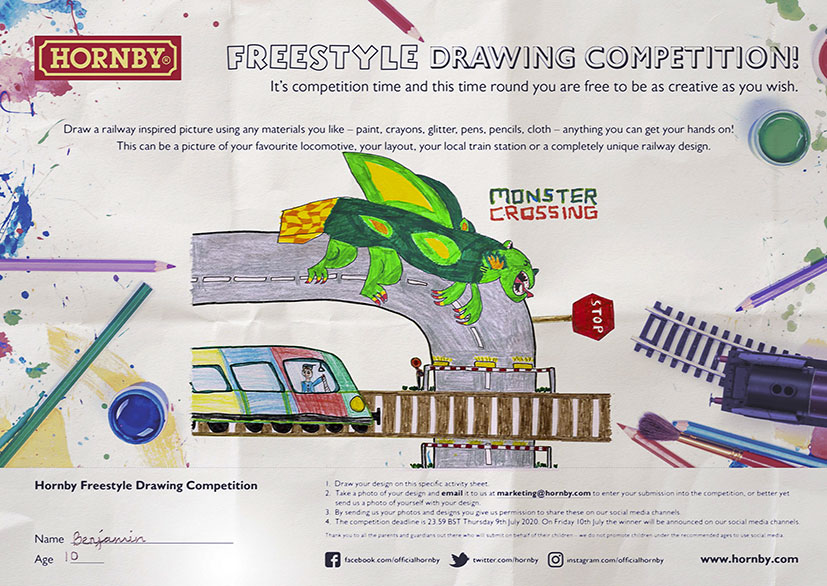
The #Hornby100 social media theme continues throughout July, so if you have memories of Hornby that you would like to share, photographs of your Centenary collection items or #Hornby100 themed cakes, or to let us know who encouraged you into the hobby, we would love to hear and see your input on our social media channels.

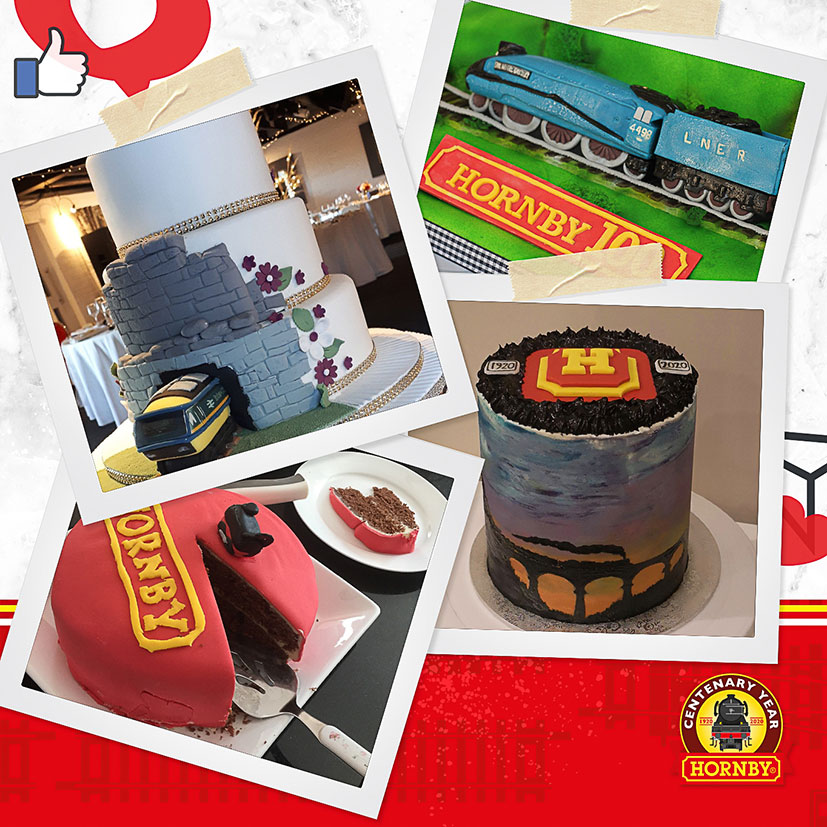
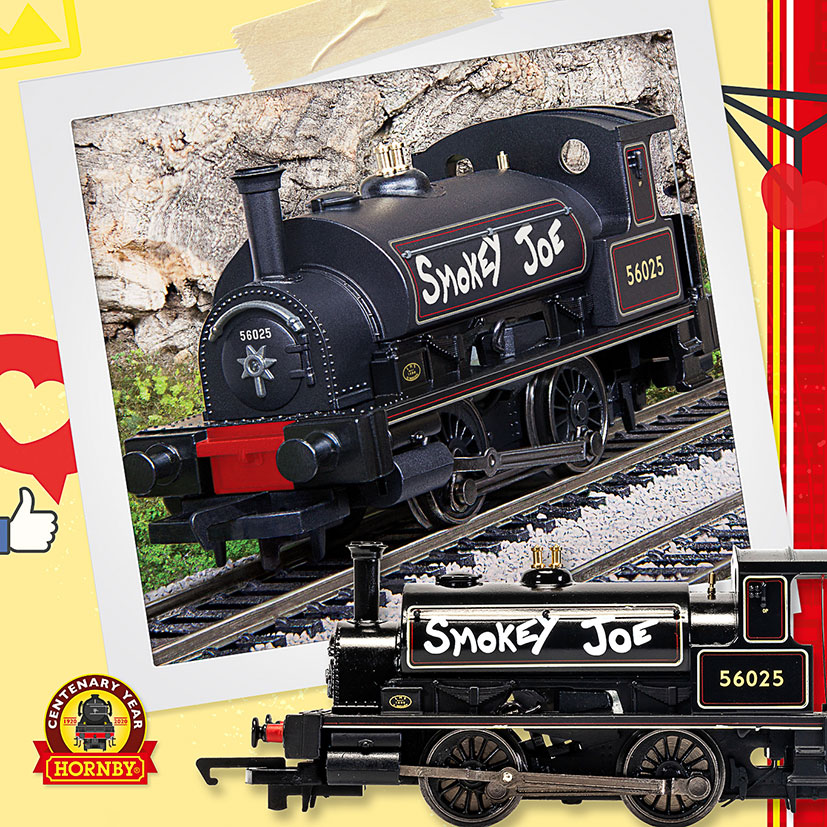
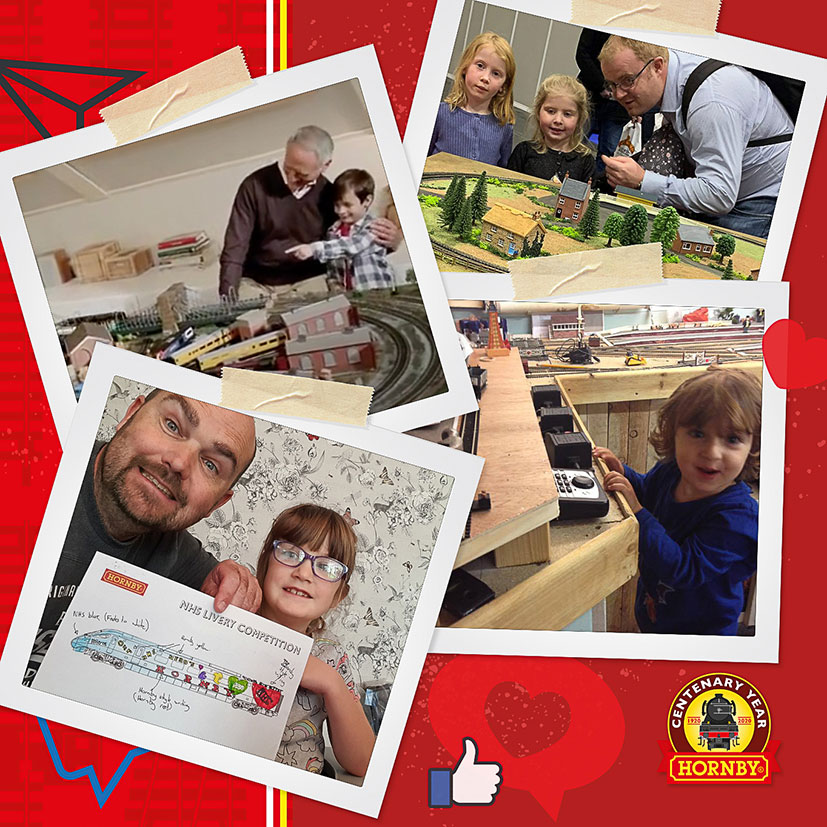
If you have any feedback from this edition of the blog, please do pass your comments on to us through Facebook, Instagram or Twitter, or via our Official Forum.
Best wishes to you all, stay safe and healthy.
The Engine Shed team
Return to Engine Shed homepage
© Hornby Hobbies Ltd. All rights reserved.